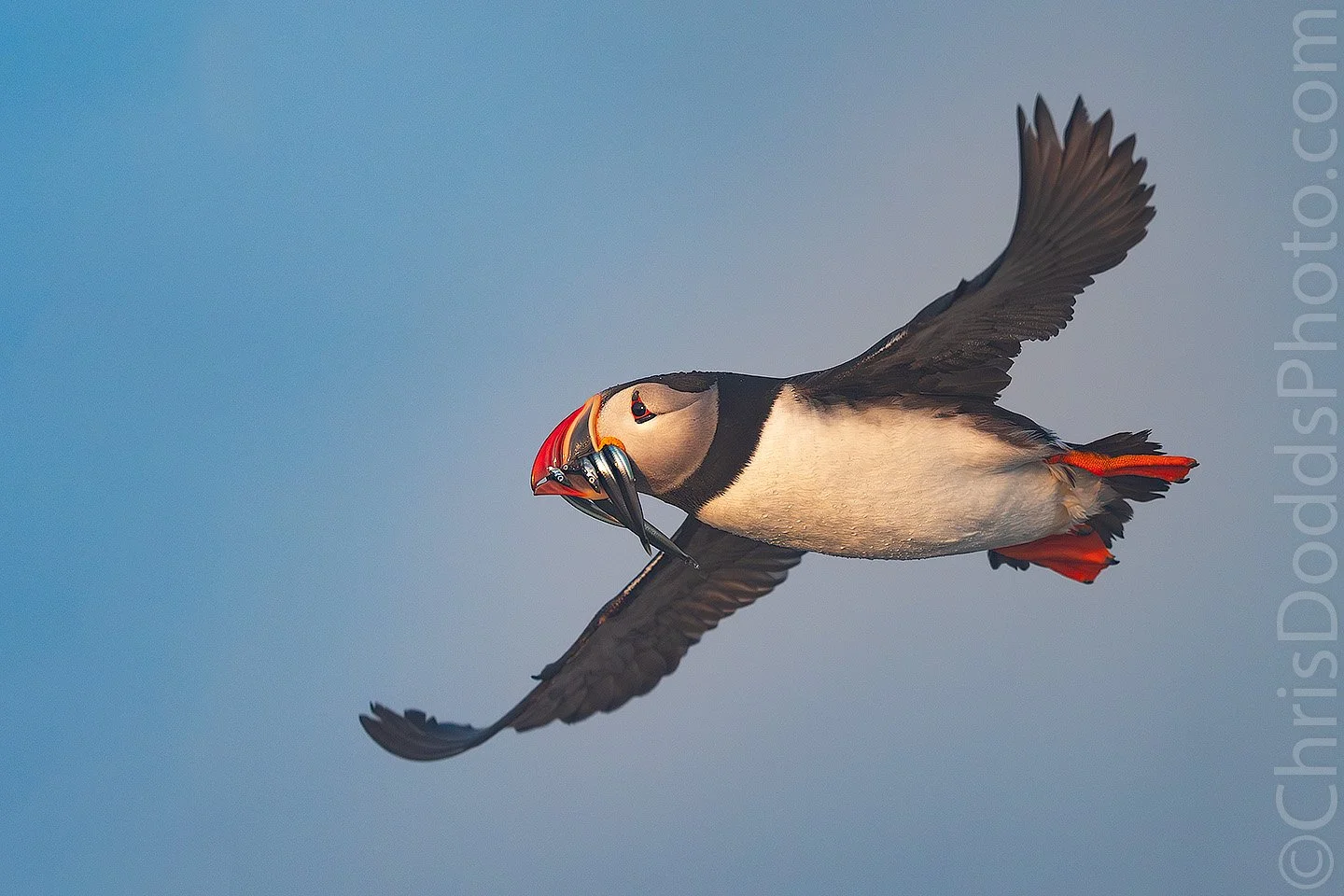In my previous post (Atlantic Puffin in flight with fish & Atlantic Puffin Photography Workshop Update), I shared our initial disappointment when a thick blanket of clouds and fog obscured the glorious morning light we'd hoped for during one of last summer's Deluxe Atlantic Puffin Workshops. However, as often happens on foggy mornings when the temperature climbs above the dew point, things began to change, and they did change quickly!
Shortly after capturing those first foggy images, the fog started to lift. The sun's golden light broke through, while hundreds of Puffins began returning to their burrows, their beaks laden with fish for their hungry young. It was a moment that gifted us with an abundance of unforgettable images to complete our already bursting portfolios.
The dew point is a crucial atmospheric measurement, representing the temperature at which air becomes saturated with water vapour and condensation begins. When the air temperature cools down to meet the dew point, the invisible water vapour in the air transforms into tiny liquid water droplets. If this condensation happens at ground level, we experience it as fog. As the sun rises and warms the air, the temperature often climbs above the dew point, causing these tiny water droplets to evaporate back into vapour, and the fog dissipates, revealing clearer skies and, as in our case, incredible photographic opportunities.
Atlantic Puffin Out of the Fog with fish (Fratercula arctica, Macareux moine, Frailecillo atlántico, ATPU) from my Deluxe Puffins Galore Workshop Mingan Archipelago National Park Reserve, Quebec, Canada. Image Copyright ©Christopher Dodds. Sony a9 Mark III Mirrorless camera & Sony FE 600mm f/4 G Master OSS Lens @600mm ISO 3,200, f/4 @ 1/5,000s Manual exposure. Full frame image.

